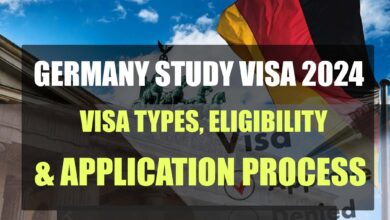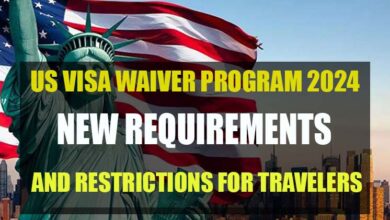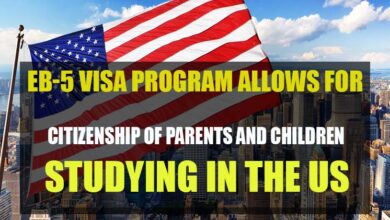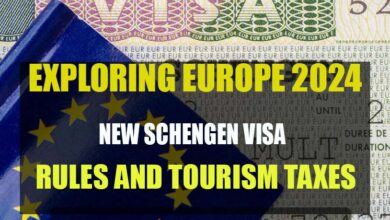US F1 Study Visa 2024: Eligibility, Required Documents & Application Tips
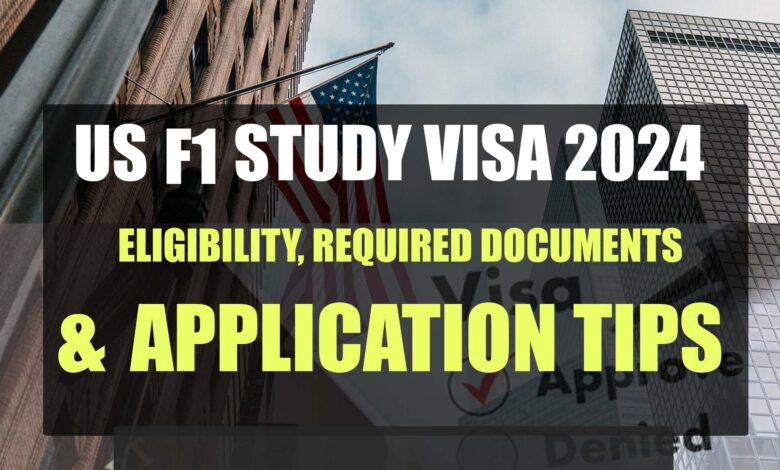
US F1 Study Visa 2024: Eligibility, Required Documents & Application Tips
Because of its renowned colleges, rich cultural diversity, and abundance of possibilities, the United States continues to be a top choice for overseas students pursuing higher education. Getting an F1 study visa is essential if you want to study in the US in 2024.
This in-depth manual will take you step-by-step through the US F1 Study Visa Process, including eligibility requirements, application procedures, and crucial advice for a fruitful application.
What is an F1 Visa?
Foreign nationals can study in the US with an F1 visa, which is a non-immigrant student visa. Students at U.S. universities who are enrolled in academic or English language programs are eligible for this visa.
Key Features of an F1 Visa
- Full-Time Enrollment: Occupants of F1 visas are required to be enrolled full-time in a recognized U.S. educational institution.
- Work Restrictions: During the academic year, F1 students are permitted to work up to 20 hours per week on campus; during the vacations, they may work full-time.
- Stay Duration: Students on F1 visas are allowed to remain in the United States for the length of their academic program plus an additional 60 days to get ready to leave.
Eligibility Criteria for US F1 Study Visa
There are requirements that applicants must fulfill to be eligible for an F1 visa. These specifications guarantee that the candidate has the funds to support themselves and that they want to study full-time.
- Academic Institution Acceptance: You must be admitted to an institution that has been authorized by the Student and Exchange Visitor Program (SEVP). Universities, colleges, private primary schools, seminaries, conservatories, high schools, and language training programs fall under this category.
- Proof of Funds: You must show that you have the money necessary to pay for your first year of study’s tuition, living expenses, and other charges. Scholarships, bank statements, and financial testimonies are examples of acceptable proof.
- Language Skills: English proficiency is a must. The majority of colleges want results from standardized tests like the TOEFL or IELTS.
- Intent to Return: You must show that you have close ties to your native country—whether through family, property, or employment—and that you want to go back there after your studies are finished.
Step-by-Step Guide to the F1 Visa Application Process
There are multiple processes involved in applying for an F1 visa, and each one demands close attention to detail. You can follow this step-by-step tutorial to assist you with the process:
1. Apply to a SEVP-Approved School
Step one is to apply to and be accepted by a school that has been approved by SEVP. After you are accepted, the school will give you an I-20 form (Certificate of Eligibility for Nonimmigrant Student Status).
Important Steps:
- Find and choose an institution that has received SEVP approval.
- Complete the institution’s application process.
- Get the I-20 form as soon as you are accepted.
2. Pay the SEVIS Fee
Before applying for a visa, you must pay the Student and Exchange Visitor Information System (SEVIS) fee. SEVIS, which keeps records on foreign students and exchange visitors in the United States, is funded by this fee.
Important Steps:
- Using the SEVIS I-901 website, pay the SEVIS charge online.
- You will require the payment receipt for your visa application, so hold onto it.
3. Complete the DS-160 Form
An online application for a non-immigrant visa is called DS-160. Your personal, educational, and travel details are gathered in this form.
Important Steps:
- On the Consular Electronic Application Center (CEAC) website, complete the DS-160 form.
- Provide a current photo that satisfies the requirements for U.S. visa photos.
- Print the barcode-containing DS-160 confirmation document.
4. Schedule a Visa Interview
You have to make an interview appointment at the US consulate or embassy in your nation of origin. It’s best to book your interview sessions in advance because wait times can vary.
Important Steps:
- On the US Visa Information and Appointment Services page, register for an account.
- Cover the cost of your visa application.
- Set up an interview at the closest embassy or consulate of the United States.
5. Prepare for the Visa Interview
During the interview, get all the paperwork together and be prepared to respond to inquiries regarding your financial situation and study goals.
Essential Records:
- Valid passport
- Confirmation page for DS-160
- Receipt for SEVIS fees
- Your school’s Form I-20 must be authorized by SEVP.
- Receipt for payment of visa application fee.
- A passport-sized photo (meeting the requirements for photos on US visas).
- Financial documentation demonstrating enough funding.
- Scores on standardized tests and academic transcripts.
- Documentation of your national origins.
6. Attend the Visa Interview
Show up for the interview at the appointed time. The consular officer will inquire about your plans for your studies, your financial status, and your ties to your native nation.
Important Advice:
- Respond with confidence and honesty.
- Outline your academic goals and the reasons for your selection of a particular university.
- Show that you have deep links to your nation of origin.
7. Visa Approval and Arrival in the US
The consulate will let you know when and how to pick up your passport with the visa stamp if your visa is granted. You can schedule your travel to the United States once you receive your visa.
Important Steps:
- Make travel arrangements to the US, making sure you arrive no sooner than 30 days before the commencement of your program.
- Notify your school of your intended arrival time.
- Plan your relocation, including lodging and packing necessities.
Post-Arrival Requirements
F1 students have certain conditions to follow once they arrive in the US to keep their visa status.
Providing an Update to Your School
Within 30 days of your arrival, you must report to your institution’s designated school official (DSO). The DSO will confirm the accuracy of your SEVIS information and offer advice on preserving your visa status.
Continuing to Enroll Full-Time
For each academic term, F1 students must be enrolled full-time. Seek permission from your DSO if you need to lower your course load.
Limitations on Employment
During the academic term, F1 students are permitted to work up to 20 hours per week on campus; however, off-campus employment is limited and requires permission. Choices consist of:
- Students may work in their field of study for up to a year following degree completion, with optional practical training (OPT). A 24-month extension may be available to STEM students.
- Students can work off-campus in internships, cooperative education programs, or other work experiences that are essential to their curriculum through the use of Curriculum Practical Training (CPT).
Travel-Related Considerations
Make sure your I-20 and visa are still valid if you intend to travel outside the US while you are a student. For re-entry into the US, the I-20 form needs to be approved by your DSO.
Tips for a Successful F1 Visa Application
Although navigating the F1 visa application procedure might be difficult, the following advice can improve your chances of success:
- Commence Early: Start the application procedure as soon as possible to prevent last-minute problems. This includes planning your visa interview, obtaining documentation, and investigating colleges.
- Be Precise and Detailed: Make sure that the data on your application forms and supplementary materials is true and comprehensive. Errors or discrepancies may result in denials or delays.
- Get ready for the interview: Prepare an explanation of your study plans, financial position, and post-graduation intentions by practicing your responses to frequently asked interview questions.
- Keep Up Your Excellent Academic Record: Good test results and academic records can support your application by highlighting your aptitude for the US classroom and your dedication to learning.
Read On
Canada Spouse & Study Visa Latest Update 2024 | Canada PR
Australia Graduate Visa Changes from July 2024 | Australia Student Visa Update
Canada Student Visa Latest Update: Canada PR
Canada Visa-Free Travel Options For Africa, Asia, and America
Top Destinations Americans Can Travel To Without A Visa In 2024
Canada Study Permit 2024: Who can Study in Canada without a Study Permit?
Canada Unveils New Work Permit Program in 2024 | Canada Work Permit
Countries With Digital Nomad Visas For Freelancers In 2024
Turkey Launches Digital Nomad Visa—Complete Guide on How to Apply
Australia Student Visa (Subclass 500) 2024: Complete Application Process
Australian Skills In-Demand Work Visa 2024 | Complete Guide
Canada Removes IELTS Test for Non-Express Entry Applicants in 2024
Canada Introduces 5-Year Work Permits for Skilled Workers
Who Needs a Visa to Visit Germany as a Foreign Tourist? A Complete Guide
Dubai Golden Visa: How to Apply for a Golden Visa as a Student
New EU Visa: Entry Requirements & Everything You Need to Know
Study Abroad: Find Out How to Safeguard Your Future with the New EB-5 Visa!
How to Apply for Turkey’s New Digital Nomad Visa in 2024
EB-5 Visa Program Allows for Citizenship of Parents and Children Studying in the US
US Visa Waiver Program 2024: New Requirements and Restrictions for Travelers
Germany Work Visa 2024: Visa Types, Eligibility & Application Steps
